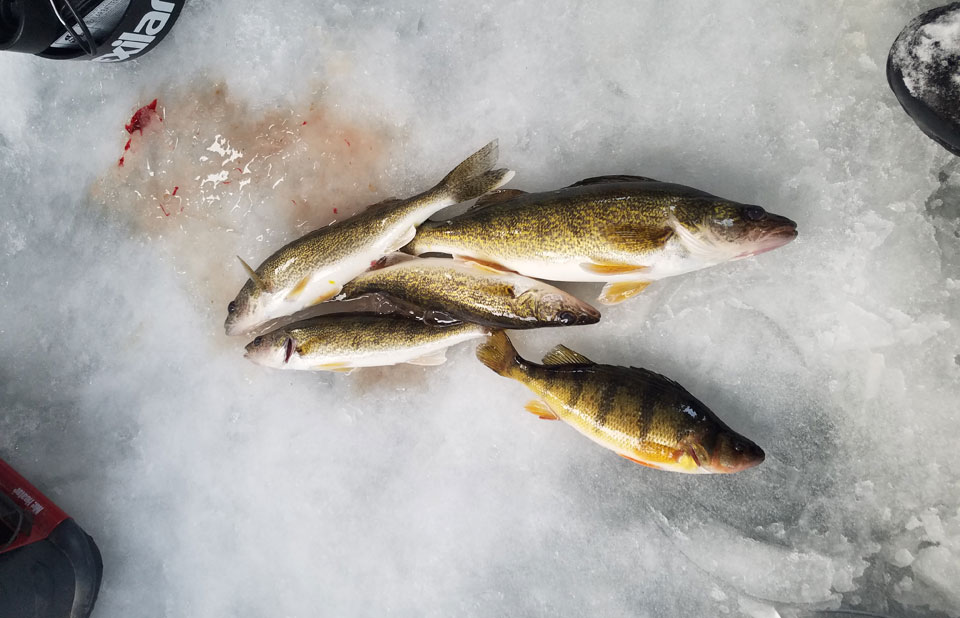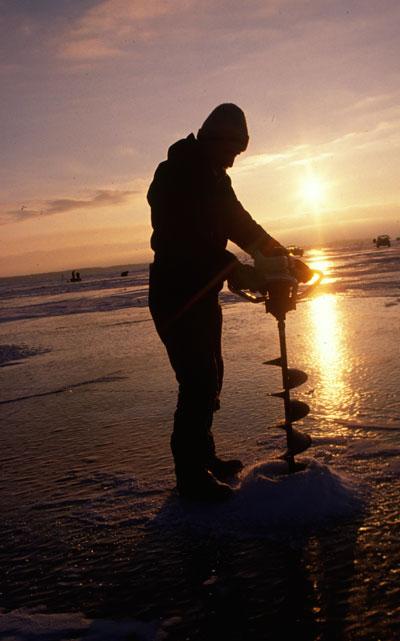Johnnie Candle from Devils Lake, North Dakota, is a tournament walleye fisherman and recently was inducted into the North Dakota Fishing Hall of Fame.

I don’t do a whole lot of ice fishing during the winter months, however, I do some just to keep myself sharp on how to catch walleyes under a variety of fishing conditions. At the time of this interview in late January, I’m headed to ice fish for several hours.
 I’ve found that some of the most productive spots result from my paying attention to where I’m fishing for walleyes in the fall. During the fall, the walleyes are headed toward their wintering areas, traditionally moving to deep structures in the water to hold on in the winter months. At the low-light parts of the winter day – at first light and at last light – walleyes usually will move up and feed where you’ve caught them in the summertime in their traditional feeding areas, generally shallow rock structure, and weeds that haven’t died off in the winter. I know many people believe that all the weeds die in the winter months, but that’s not true. If a region doesn’t get much snow, then in those shallow-water feeding sites, the grass will continue to grow, even under the ice. If you can locate a nice green patch of weeds under the ice, that can be a great place to concentrate and catch walleyes.
I’ve found that some of the most productive spots result from my paying attention to where I’m fishing for walleyes in the fall. During the fall, the walleyes are headed toward their wintering areas, traditionally moving to deep structures in the water to hold on in the winter months. At the low-light parts of the winter day – at first light and at last light – walleyes usually will move up and feed where you’ve caught them in the summertime in their traditional feeding areas, generally shallow rock structure, and weeds that haven’t died off in the winter. I know many people believe that all the weeds die in the winter months, but that’s not true. If a region doesn’t get much snow, then in those shallow-water feeding sites, the grass will continue to grow, even under the ice. If you can locate a nice green patch of weeds under the ice, that can be a great place to concentrate and catch walleyes.
I like to pinpoint long, underwater points or ridges under the ice that allow the walleyes to move up to the shallow-water feeding spots and then return to the deep-water places, as the sun comes up, or as darkness falls on a lake. Catching the walleyes under the ice is much like deer hunting in that like a hunter, a walleye fisherman looks for: pinch points or narrow paths walleyes will take from the deep water to the shallow water, steep bottom breaks, and the edges of underwater grass. Once you pinpoint these places in the spring and the fall and mark them with your GPS, you may want to put a W to denote wintertime fishing at the end of the name or the number you’ve given these waypoints. Then you’ll know that those waypoints are where you may want to fish when the lake is iced up.
I use Humminbird portable ice-fishing depth finders. I can take my SD card out of the depth finder on my boat and put it into my Humminbird depth finder GPS that I use for ice fishing. After fishing for a couple of years in a region, you’ll determine which spots are the most productive in shallow water, and which waypoints are better in deep water. Then you drill your holes, set up your shanty and ice fish those waypoints. I’ve learned that the locations I mark in October and November on my walleye lakes are great sites to fish when the lake ices up in December – February.
The tackle you use for ice fishing is different than what we use for boat fishing for walleyes. The rods are much shorter – only 24-26 inches long - and we’re fishing in small, portable houses on the ice, where long rods aren’t appropriate. If I’m using lead-headed jigs and jigging for the walleyes under the ice, I want a rod with a fast taper and plenty of backbone in the butt section of the rod. I want a sensitive tip to be able to see the bites on my rod. There’s a wide variety of tip-ups you can use. I prefer the old reliable tip-up made by a company, Beaver Dam, sold by online retailers and sporting goods stores that offers a nice, solid tip-up and a brass metal spool that spins well. I enjoy fishing on the ice in North Dakota where I live because we’re allowed to fish four lines at one time. I can fish holding one rod, have three tip-ups and can see which hole is producing the most walleyes and in which direction the walleyes are moving.



























